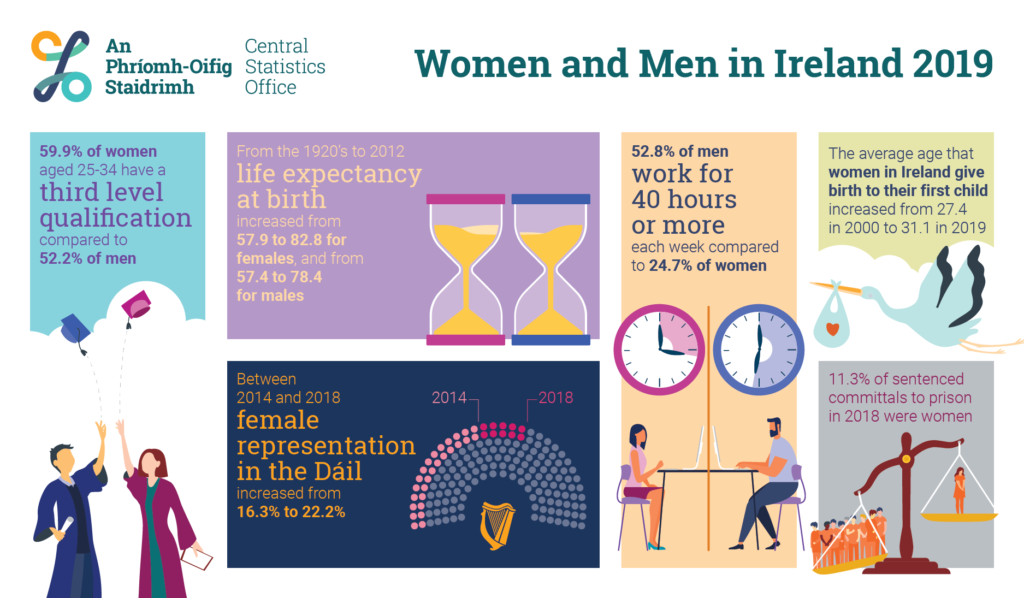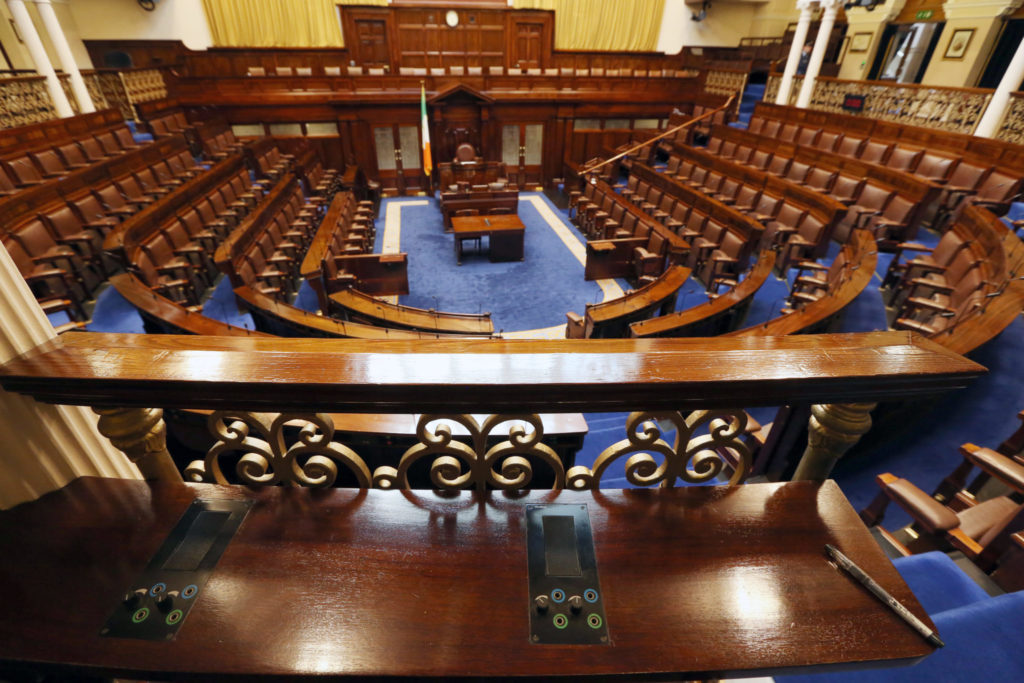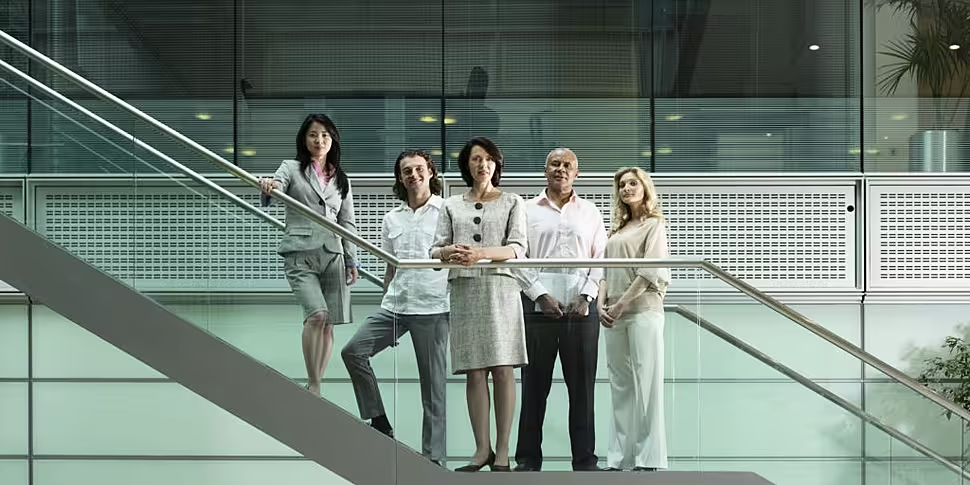Irish women born in 2017 can expect to live to 84, while the life expectancy of a man born in the same year is 80.
That is according to newly-released data from the Central Statistics Office (CSO).
It also shows that more women aged 25-35 have a third level education than men - but the gap has reduced from 15.1 percentage points in 2008 to 7.4 percentage points in 2018.
The average hours worked per week is 40.1 hours for men and 32.3 hours for women.
While rates of unemployment fell in Ireland between 2012 and 2018, which led to a narrowing of the gap in male and female unemployment rates.
This gap has closed from 5.5 percentage points to just 0.4 percentage points.
Men also work longer hours than women in paid employment.
More than two in four men (or 52.8%) work for 40 hours or more each week - compared to less than one in four women (24.7%).
The average hours worked per week is 40.1 hours for men and 32.3 hours for women.
 Source: CSO
Source: CSOMen also have a higher employment rate than women - at 74.6% versus 63.7% respectively.
The number of men emigrating from Ireland fell from 41,900 in 2009 to 28,100 in 2019 - while the number of women emigrants fell from 30,100 to 26,800 over the same period.
In 2019 net migration had climbed to 33,700 people, with 88,600 people arriving to live in Ireland and 54,900 leaving the country to live abroad.
Men are also more likely than women to be in a road accident.
Only one in four (25.6%) of the 162 people who died on Irish roads in 2017 were women.
Of car drivers killed on the roads, 27.8% were female while 48.0% of car passengers who died were female.
Four out of five of the 14 cyclists killed were men.
While women are at a higher risk of poverty than men.
In Ireland, 43.9% of women were at risk of poverty in 2017, before income from pensions and social transfers was taken into account.
This is compared to 41.2% of men.
The CSO says: "The at risk of poverty rate, after social transfers and pensions, was 16.5% for women and 14.7% for men.
"All of these rates are lower than the EU average."
 A general view from inside the empty Dáil chamber, 20-09-2019. Image: Laura Hutton/RollingNews
A general view from inside the empty Dáil chamber, 20-09-2019. Image: Laura Hutton/RollingNewsAnd female representation in the Dáil is lower than European Union average.
After the 2016 general election, the percentage of women in the Dáil increased from 16.3% to 22.2%.
This has not significantly changed after the 2020 general election.
The EU average of female representation increased from 27.7% to 31.2% between 2014 and 2018 - with Ireland being the 10th lowest representation in the EU.









